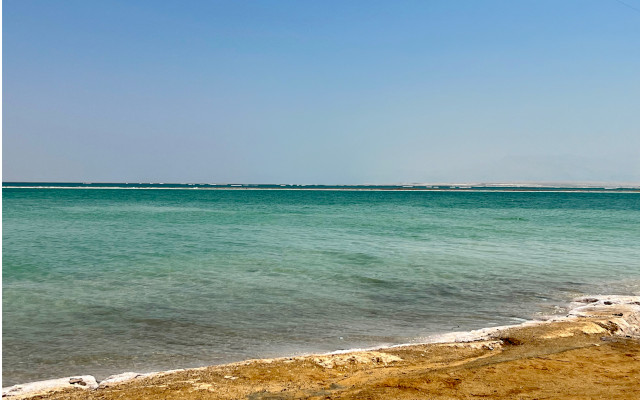In a significant step for public health, the European Food Safety Authority (EFSA) has issued a positive safety opinion for a novel food: a low-sodium salt derived from the Dead Sea. This unique salt, rich in potassium and magnesium, is designed as a partial replacement for sodium chloride (table salt), offering a crucial tool for reducing sodium intake among adults and the elderly.
With global sodium consumption far exceeding WHO recommendations, this EFSA approval marks a potential breakthrough in combating hypertension and cardiovascular diseases. This article delves into the details of EFSA’s assessment, the production process, and the benefits and considerations surrounding this mineral, low-sodium Dead Sea salt.
1. Introduction to the candidate novel food
On 21 December 2018, BK Guilini GmbH requested authorisation from the European Commission to market a mineral salt from the Dead Sea containing potassium and magnesium as a Novel Food (NF) to be used in certain food categories, for adults and elderly people.
The candidate novel food (NF) is a mineral salt primarily composed of magnesium potassium and trichloride hexahydrate (chemical formula: KMgCl₃·6H₂O), with minor amounts of other minerals such as magnesium chloride, sodium chloride, and trace elements. This salt is derived from the Dead Sea, a unique natural resource known for its high mineral content. The NF is intended to be used as a partial alternative to sodium chloride (table salt) in food manufacturing, specifically in products such as meat, sausages, pasta-based dishes, rice-based dishes, and other cereal-based dishes.
The NF is not intended for direct sale to consumers but will be used exclusively by food manufacturers to enhance the nutritional profile of their products while reducing sodium content.
2. Production method: natural or synthetic?
The NF is produced through a natural, multi-step crystallization process using seawater from the Dead Sea. The production method involves the following steps:
- solar evaporation. Dead Sea brine is pumped into a series of evaporation ponds, where solar energy is used to concentrate the minerals;
- fractional precipitation. As the brine evaporates, sodium chloride (NaCl) precipitates first and is removed. The remaining brine is further concentrated, leading to the crystallization of carnallite (magnesium potassium trichloride hexahydrate);
- harvesting and processing. The crystallized carnallite is mechanically harvested, sieved, and processed into the final product, which is then stored in polyethylene bags to prevent moisture absorption.
The production process is fully natural, relying on solar energy and the unique mineral composition of the Dead Sea. It adheres to good manufacturing practices (GMP) and hazard analysis critical control points (HACCP) principles, ensuring the safety and quality of the final product.
3. Intended uses and quantitative limits
The NF is proposed to be used as a partial replacement for sodium chloride in specific food categories, with the following maximum use levels:
- raw cured or seasoned meat: 1050 mg/100 g
- cooked cured or seasoned meat: 700 mg/100 g
- pasta, rice, and cereal-based dishes: 600 mg/100 g
- preserved or partly preserved sausages: 1050 mg/100 g
These use levels have been carefully calculated to ensure that the combined intake of bromide (a naturally occurring trace element in the Dead Sea salt) from the NF and the background diet does not exceed the tolerable daily intake (TDI) of 0.4 mg/kg body weight per day, as established by EFSA.
4. Pros and cons of the Dead Sea salt
The novel food (NF) derived from the Dead Sea offers several advantages, and some disadvantages to be taken into account for children and adolescents.
4.1. Advantages
Firstly, the Dead Sea salt serves as a partial alternative to sodium chloride (table salt), which is crucial for reducing sodium intake in processed foods. This is especially important given that global sodium consumption is nearly double the WHO-recommended threshold of 2 g/day (WHO, 2012). Excessive sodium intake is a well-known risk factor for hypertension and cardiovascular diseases, making this NF a valuable tool for improving dietary habits.
Additionally, the NF provides potassium and magnesium, two essential minerals that are often under-consumed in modern diets. Potassium plays a key role in regulating blood pressure, while magnesium supports muscle and nerve function. By incorporating these minerals into food products, the NF can help address nutritional gaps in the population.
Another significant advantage is the natural origin of the NF. It is derived from the Dead Sea, a unique and sustainable resource, and its production relies on solar evaporation, making it an environmentally friendly option. This aligns with the growing demand for natural and sustainable food ingredients. This product was indeed granted as safe, by FDA (Food and Drug Administration, US), in 2012, as Generally Recognized As Safe (GRAS No 403).
4.2. Disadvantages for younger population
However, there are also disadvantages to consider. The NF contains bromide, a trace element that can accumulate in the body and has been associated with neurotoxicity at high levels (EFSA Scientific Committee, 2025). While EFSA has concluded that the combined intake of bromide from the NF and the background diet is within safe limits for adults and elderly individuals, children and adolescents may be more vulnerable to its effects.
Peer-reviewed studies have shown that chronic exposure to bromide can lead to cognitive impairments and endocrine disruptions in younger populations (Rauws, 1983; EMEA, 1997).
Furthermore, due to the potential risks associated with bromide, the NF is not recommended for use in foods targeted at children and adolescents. This limits its applicability in certain food categories, such as school meals or children’s snacks, which could otherwise benefit from reduced sodium content.
5. EFSA’s safety assessment
EFSA conducted a comprehensive safety assessment of the NF, considering its composition, production process, and intended uses. Key findings include:
- no toxicological concerns. The NF is expected to dissociate in the gastrointestinal tract, releasing its constituent minerals (potassium, magnesium, and chloride) without forming harmful by-products;
- nutritional impact. The NF’s contribution to the intake of potassium and magnesium is beneficial, while its sodium content is lower than that of traditional table salt, making it a healthier alternative;
- bromide exposure. The combined intake of bromide from the NF and the background diet does not exceed the TDI of 0.4 mg/kg body weight per day for adults and elderly individuals.
6. Conclusions
6 years after the NF application, in its opinion published on 15 January 2025, EFSA concluded that the Dead Sea salt is safe for consumption under the proposed conditions of use, provided that its use is limited to adults and elderly individuals.
On this basis, the European Commission and the Member States’ experts at the PAFF (Plants, Animals, Food and Feed) Standing Committee are expected to authorize the placement of this novel food in the EU single markets, in the following months, at the above mentioned conditions.
Better late than never, a good news for adults’ and elders’ health.
Dario Dongo
Cover credit: Dead Sea, Ein Bokek, Israel. Dario Dongo, 2023
References
- EFSA Scientific Committee (2025). Scientific Opinion on the Risks to human and animal health from the presence of bromide in food and feed. EFSA Journal, 23, e9121. https://doi.org/10.2903/j.efsa.2025.9121
- EMEA (1997). Bromide, sodium salt. Summary Report. EMEA/MRL/182/97-FINAL. https://tinyurl.com/3r7r8ec8
- Rauws, A. G. (1983). Pharmacokinetics of bromide ion. An overview. Food and Chemical Toxicology, 21, 379–382. doi: 10.1016/0278-6915(83)90091-1
- WHO (2012). Guideline: Sodium intake for adults and children. World Health Organization. ISBN: 978-92-4-150483-6 https://tinyurl.com/4wu6bpyz
Dario Dongo, lawyer and journalist, PhD in international food law, founder of WIISE (FARE - GIFT - Food Times) and Égalité.








